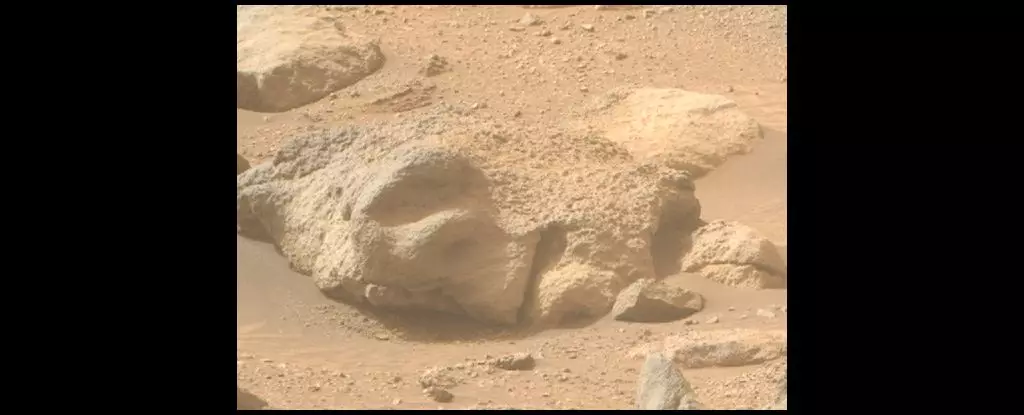Mars, often referred to as the Red Planet, continues to captivate the human imagination, not only because of its stark, alien landscapes but also due to the phenomenon of pareidolia. Recently, an image captured by NASA’s Perseverance rover has ignited the intrigue of both amateur and professional astronomers alike. What appears to be a decaying human head lying on the Martian surface is, upon closer inspection, simply a rock. This incident underscores not only our tendency to see shapes and figures in random objects but also highlights the bizarre intersection of science and human perception.
On September 27, 2024, the Perseverance rover transmitted images that sparked considerable interest and debates across the globe. The rock in question, an unremarkable piece of sedimentary sandstone in terms of geological composition, has weathered in such a way that it resembles a human head lying on its side. On Mars, where conditions have sculpted the landscape into strange forms over millions of years, this case serves as another perfect illustration of pareidolia. The rock’s details, including its nose, brow ridge, and chin, evoke images of a lifeless body, eliciting fundamental questions about the nature of visual perception and its implications in our understanding of cosmic phenomena.
Understanding Pareidolia in a Broader Context
Pareidolia is a fascinating psychological phenomenon, where the brain interprets vague stimuli as familiar patterns—often faces. This predisposition could have evolutionary roots connected to social behavior and survival. Various instances of pareidolia have been documented not only on Mars but around the world, from the iconic image of a face on the surface of Mars popularly dubbed “Face on Mars” to patterns perceived in clouds or the graininess of walls. Even in everyday environments, our brains are wired to identify faces quickly, a survival trait that perhaps allows us to form social groups and functional communities.
Indeed, the scientific community also recognizes pareidolia as an integral part of how we interact with images and shapes found in nature. For instance, initiatives like Onformative’s Google Faces project allow users to explore face-like shapes within satellite imagery. Such activities not only illuminate the patterns of pareidolia but also emphasize its presence on Earth and beyond.
The Geological Narrative of Mars
It is vital to appreciate that the sight of the “human head” rock does not imply any extraterrestrial life or former civilizations on Mars. This case reinforces the reality of the planet’s geology. The weathering of rocks, shaped by wind and perhaps once by water, gives rise to forms that can resemble various objects, including anthropomorphic figures. Scientists believe that billions of years ago, Mars possessed conditions that may have fostered life, yet this potential has long faded away, leaving behind only sedimentary remnants to inspire our imagination.
While the curiosity surrounding these images often takes center stage, the scientific focus remains on understanding the geological and climatic history of Mars. Exploring these formations contributes invaluable data to our knowledge of planetary evolution, insights that are crucial especially as future missions aim to extend the reach of human exploration.
As humanity prepares for future crewed missions to Mars, the hope to uncover definitive proof of life—either past or present—remains fervent. Yet, the rock that simulates a human head is a reminder of our relentless drive to find connections, whether assumed or real. It highlights the possibility that, perhaps, we might someday leave behind our own enigmatic structures. In the far-off future, alien explorers might encounter remnants of our civilization, invoking the same sense of wonder we experience now, trying to decipher whether life once flourished on our red neighbor.
While the “head” of Mars might be a mere optical illusion, it serves as a profound reflection of human curiosity and our intrinsic desire to seek meaning in the cosmos. It challenges us to recognize the boundaries of our perception, while we continue our quest to unravel the true mysteries of outer space.


Leave a Reply